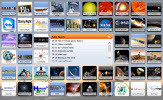September 2019
This month the planet viewing is favoring the evening skies as the two of the largest planets, Jupiter and Saturn, are over the southern horizon and are visible throughout the night hours. The two inner planets, Mercury and Venus, start appearing in the evening skies after sunset. Mars is at solar conjunction and will not be visible until next month when it reappears in the morning skies. The Dwarf Planet Ceres stays near Jupiter but has an apparent magnitude between 7 and 8, making it not naked-eye visible.
September is also one of two months during the year known as an equinox month. Click here to read more about the September Equinox.
Click here for the month at a glance calendar.

My wife measuring the angle of the Sun on the
equator at Mitad del Mundo in Quito Ecuador. This was during April, and the on the day we did this, 1:20 pm ECT (Ecuador Time) April 23rd, the sun was 71o over the northwest horizon.
Mercury moves from the opposite side of the Sun, superior conjunction, into the evening skies around the middle of the month with viewing favoring the Southern Hemisphere.
Venus joins Mercury in the evening skies in a very close conjunction, around 0.3o on the 13th. This may be a difficult to view as both inner planets will be rather close to the Sun.
Mars reaches solar conjunction on the 2nd and remains too close to the Sun to be visible this month.
Dwarf Planet Ceres is within about 5o to the west from Jupiter and during the month slowly moves eastward past the reddish star Antares. Ceres has an apparent magnitude that ranges from 7.6 to 8.4 this month making it too dim to be seen with the naked eye.
Jupiter remains visible but low above the southern-southwestern horizon this month. Jupiter will be in conjunction with the first quarter Moon on the 2nd
Saturn ends its retrograde motion on the 18th, resuming its regular prograde, or eastern, orbital motion. Saturn has a close conjunction with the waxing gibbous Moon on the 8th.












 Above the Solar System at 10 day Intervals
Above the Solar System at 10 day Intervals


